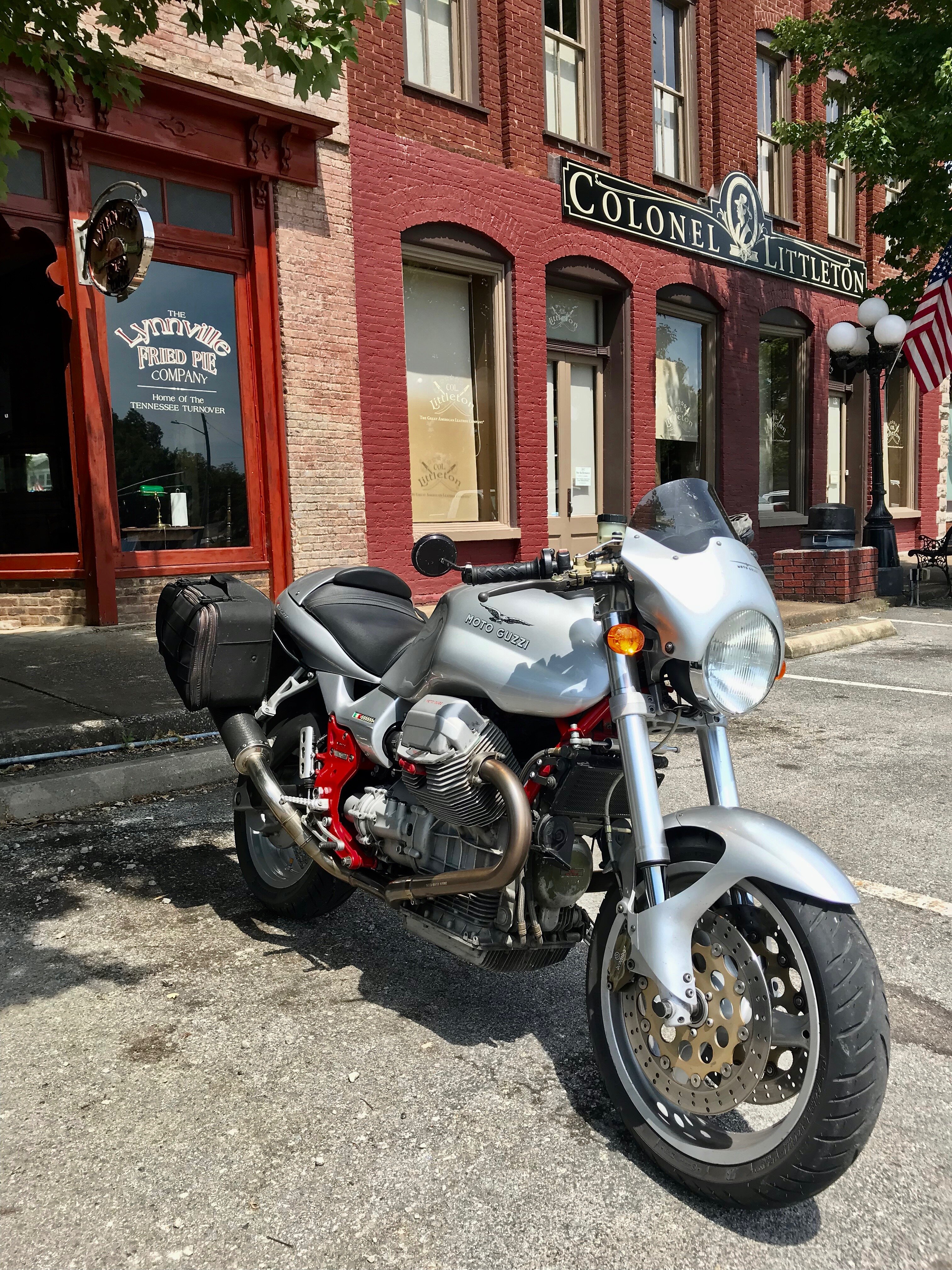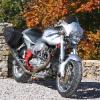-
Posts
19,906 -
Joined
-
Last visited
-
Days Won
1,130
Content Type
Profiles
Forums
Events
Gallery
Community Map
Everything posted by docc
-
Aw, did I say 'worth less' . . . I meant priceless. You can't have mine. I see my Sport is in the $4500-5500 range. Five years ago I paid the full 12000 USD. But just about any sporting Guzzi in the past 20 years are in that range. Any older ones are worth more. I was alarmed how quickly the Sport dropped but by 2020 it should be worth more than what I paid for it.
-
I spent about 70 USD on one last year. But I've never actually priced a cat's ass.
-
Sorry, had trouble with the photo upload. My PC has pushrods.
-
This must be the T3 version of aerial tree trimming:
-
MMM, nummy. . . Who's hole?
-
Yeah at 350watts the Guzzi is down on output compared to the BMW. Hey, but they are from south of the Alps! Last season I noticed my lights dimming when the electrics cycled on ( Gerbings jacket and gloves - 99 watts/8 amps). Not long later I found the regulator had given it up (250 USD). You don't suppose the additional draw would actually hurt the regulator?
-
Have a close look also at the bell crank on the left TB. The fuel line, spark plug wire and some other wires and hoses are in pretty close proximity. A little grooming and zip-ties may be in order.
-
This is the best advice. And from the best Irish US Guzzi Wrench in the world !
-
My Joe Kenney guards stick out 3mm more than the stock. These are the most compact models. I believe he does make some that are skeletized and stick out more. I didn't want the air resistance shaving off those 10ths on the top end.
-
Cyclegarden certainly has a nice site for girls who can't keep their hands off their Guzzi. But the bikes are all loops with the odd Tonti. Where are all the babes on V11?
-
Two hundred bucks is kinda steep just to read the sensors. I suppose I'll continue to back probe the ECU with straight pins and a digital meter and hook up my mercury sticks.
-
Not long ago one of us asked about accessing the onboard data of the ECU. A raging discussion ensued regarding all the aftermarket interfaces available. At one time, I thought there was a simple source for a PC program to download to read the "dashboard' of the ECU. Simply monitoring temp, RPM and TPS would be helpful for us minimalists ( cheap bastards). Having hooked to the "Guzzi tool" on one occasion I found the tach to read about 300 rpm high. Not a big deal at 4500 maybe but significant when setting the TPS at idle. With the tach reading 1100rpm really was 800 set the TBS somewhat rich for the actual rpm. Is there not a download or CD-rom for the "dashboard?"
-
There have been enough opinions to retourque the heads that I feel remiss having not done so at 40,000 miles. After my whupp-slamm-slide 13,000 miles ago I found I had to adjust the slamside valves more than the offside a couple of times (4000 mile adjustment intervals). Good question: what is the interval for head retourquing and is this affected by a tip-over against the head guard?
-
I don't know about Teflon but the modern housings ar definately lined. I was thinking nylon. In that case most lubes will soften the nylon and increase the drag. Also, there are nylon gears in the bevel heads. Just to be totally contradictory I've made sure to pack these with a good dose of BelRay Waterproof grease. The early Veglias have this fail-prone bevel drive at both ends of the cable . Later speedo has direct connection.
-
The GB is a wonderful motorbike. At about 30hp it is ,as Gordon Jennnings once said, "equal to a gentlemanly pace." Yet it is so narrow and lithe I have cooked the derrieres of many a liter bike ( much to their dismay). Recently I thought of selling it. It would fetch, perhaps, $3500USD. Just a glance at it and I have renigged. The whole affair began with my oggling of a KTM 950 in orange all kitted out. Then thinking, ' off with the VFR, the GB and one of the XR's and maybe I could swing this . . .' I really do still lust after the KTM but just can't part with the GB. It is my first bike with 42,000 miles. Still, if I could have only one it would be the Sport. The way the cylinders ring at full chat on a cool morning, carving into the corners, the barking-grumbling Mistrals, all swooping-flying like an aviator intense on the dive, pulling up from the trees, banking, climbing hard. A leaping panther of a bike, so eager, so all-bent on satisfaction. She likes it, really, all the roughness and tossing about. Neither of us can wait til next time. You just can't service an Italian bike without thoughts like these.
-
Wow! Two posts and you guys have completely serviced a modern Guzzi! Consider applying dielectric grease to every connector you come across and retorque the battery terminals. Ooh, she's gonna love you back after this!
-
Oh , my, that's easy to like. And the bike's nice, too :!:
-
In a word, every single Moto Guzzi made can be considered a limited edition. Ciao, Steve G. 64171[/snapback] Rare even !
-
Mine got worse and worse up until the new gearbox. Much better but still quite a lot. It really forces me to be smooth into corners.
-
One wife - six bikes. Dcn't tell the Sport I'm sleeping around.
-
Yo ho! I'd say chiropractors have saved me as well. Though perhaps not in time to ride RC51's comfortably. Here, deep in the land of the Milwaukee Ride most folks consider my V11 Sport a 'crotch rocket.' It's hard to convince them that its 9.3:1 requires more marinara than rice.
-
What's zat? 'bout an '81 SR500? Very nice! No, really, I'd say that even without the terrier latched to my leg.
-
Ah, bravo! The 'NemEnzo' Effect! This thread should make 346 posts. Like a lively chat at a good party. I'm rather out of the loop having ditched and resurfaced at about the same times (conspiracy???). Do you still have the V11? I suppose it is such a croozer for you next to the RC51 which is race bred. I remember following an endurance rider in the Pisgah Forest of North Carolina , he on the RC51 and I on my GB500. It wasn't like I would pass hm on the inside but,oh, the exhiliration!
-
I had an 80/100 melt the connector on a Honda after several years. It never shorted or opened but sure looked bad. Another 80/100 damaged the plastic lens of a Ford headlamp assembly. I like the Sylvania Silver Star. 77 watt high-beam, distinctive color and full beam. I do think the system benefited from running fused hots to separate relays in the shell abd separate grounds to frame. Check out this thread on relay failures.


